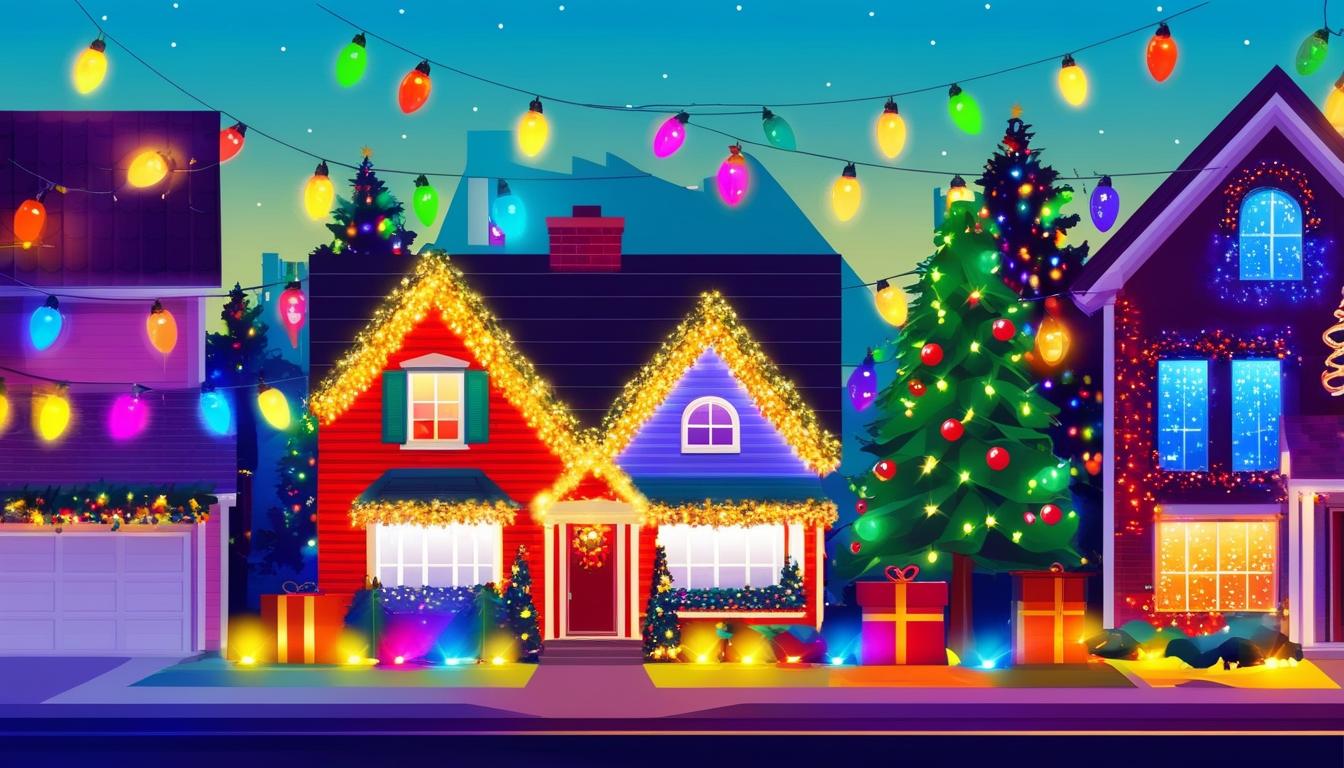
The federal government, through the U.S. Department of Energy (DOE), has implemented a ban on the sale of incandescent light bulbs, including some typically used for Christmas decorations, across the United States. This policy shift, which began to take effect in the 2022-2023 period, marks a significant push towards energy efficiency, encouraging the use of LED bulbs instead. The DOE highlights that LED lights offer substantial advantages over their incandescent predecessors, including a 75% increase in light output and a lifespan 25 times longer.
In New York State, this federal directive aligns with broader environmental and energy-saving initiatives. The transition away from incandescent bulbs includes a focus on residential and seasonal lighting, meaning traditional incandescent Christmas lights are becoming obsolete under this new regulation. However, despite this ban, it appears unlikely that there will be stringent enforcement measures targeting the use of existing incandescent Christmas lights within homes.
Stores and manufacturers have shifted their inventories to mostly feature LED products, anticipating consumer demand during the holiday season. These LED alternatives not only meet the new regulatory standards but are positioned as eco-friendly and cost-efficient options for consumers.
While this directive covers many forms of incandescent lighting, there are notable exceptions where these bulbs can still be produced and sold. According to ABC 7 News, certain specialty bulbs, such as appliance lamps for refrigerators and ovens, black lights, and plant lights, remain exempt from this rule. Other exceptions include infrared lamps, bug lamps, and certain colored and decorative lamps which are still permissible under the current regulation.
The shift in lighting products can also be seen in the grand displays that light up regions across New York State. For instance, the Winter Festival of Lights at Niagara Falls, remains a huge attraction, featuring over three million LED lights and elaborate fireworks displays from November 16, 2024, through January 5, 2025. This event stands as a testament to the vibrant light displays that continue in the era of LED lighting technology.
As the transition unfolds, a question arises regarding the effect on holiday traditions. New Yorkers are witnessing a gradual transformation in the appearance of their festive decorations, as LED technology reshapes the market landscape. This transition marks major environmental and practical changes, reflecting wider trends towards energy efficiency nationwide.
In summary, while the federal government’s ban on incandescent bulbs applies broadly, New Yorkers retain access to certain specialty lighting products. As LED lights take precedence, their impact on both personal and public holiday displays is evident and continuing to evolve. The attendant economic and environmental benefits from this change are expected to align with ongoing sustainability efforts in the state and beyond.
Source: Noah Wire Services
References
- https://insights.regencysupply.com/was-there-actually-an-incandescent-light-bulb-ban – Corroborates the federal government’s phase-out of most incandescent and halogen products in 2023 and the impact on the future of lighting.
- https://www.energy.gov/articles/biden-administration-implements-new-cost-saving-energy-efficiency-standards-light-bulbs – Supports the DOE’s new rules for general service lamps, including the minimum standard of 45 lumens per watt and the expected energy savings.
- https://www.energy.gov/articles/debunking-myths-about-phasing-out-incandescent-lightbulb – Clarifies that the US government is not banning all light bulbs, but rather setting higher efficiency standards, and lists exemptions for certain specialty bulbs.
- https://abcnews.go.com/US/new-lightbulb-rules-ban-incandescent-lightbulbs-now-effect/story?id=101897308 – Details the ban on incandescent light bulbs starting August 1, 2023, and the exemptions for certain types of bulbs like black lights, bug lamps, and plant lights.
- https://insights.regencysupply.com/state-light-bulb-bans – Provides information on state-specific restrictions and exemptions for various types of light bulbs, including those in New York State aligning with federal directives.
- https://www.energy.gov/articles/biden-administration-implements-new-cost-saving-energy-efficiency-standards-light-bulbs – Explains the advantages of LED lights over incandescent bulbs, including longer lifespan and higher energy efficiency.
- https://abcnews.go.com/US/new-lightbulb-rules-ban-incandescent-lightbulbs-now-effect/story?id=101897308 – Mentions the lack of stringent enforcement measures targeting the use of existing incandescent Christmas lights within homes.
- https://insights.regencysupply.com/was-there-actually-an-incandescent-light-bulb-ban – Discusses the shift in inventories by stores and manufacturers to feature mostly LED products in anticipation of consumer demand.
- https://www.energy.gov/articles/debunking-myths-about-phasing-out-incandescent-lightbulb – Highlights the economic and environmental benefits of the transition to LED lighting, including cost savings and reduced carbon emissions.
- https://abcnews.go.com/US/new-lightbulb-rules-ban-incandescent-lightbulbs-now-effect/story?id=101897308 – Notes the broader environmental and energy-saving initiatives aligned with the federal directive, including the impact on holiday traditions and decorations.
- https://insights.regencysupply.com/state-light-bulb-bans – Provides examples of public light displays, such as the Winter Festival of Lights at Niagara Falls, that feature LED lights, reflecting the wider trends towards energy efficiency.
- https://wibx950.com/ixp/40/p/christmas-lights-banned-new-york/ – Please view link – unable to able to access data